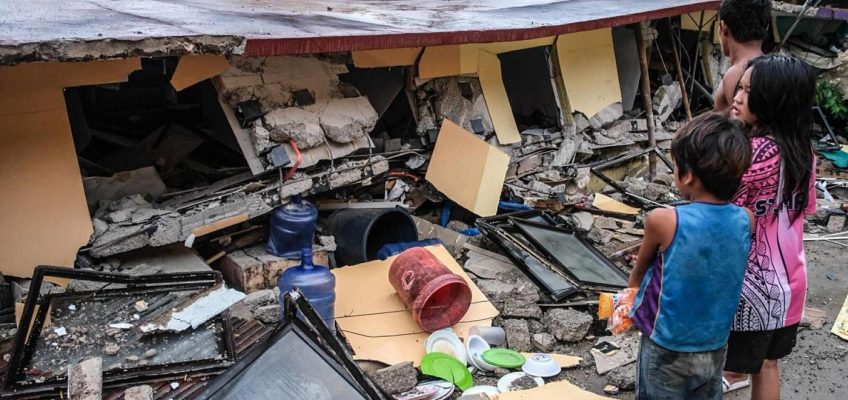By RENATA BRITO
BARCELONA, Spain (AP) — Activists on board a flotilla of vessels sailing toward Gaza said they were prepared for the Israeli navy to intervene as they approached the besieged Palestinian territory on Wednesday, after a tense night in the Mediterranean Sea.
Related Articles
Israel orders Palestinians to leave Gaza City, saying those who stay will be considered ‘terror supporters’
3 alleged Hamas members arrested in Germany on suspicion of plotting attacks on Jewish institutions
Denmark warns that Russia is waging a hybrid war on Europe, as EU leaders gather for security talks
Police say security sweep ends and Oktoberfest is reopening after bomb threat
US military starts drawing down mission in Iraq, officials say
The Global Sumud Flotilla, with Greta Thunberg, Nelson Mandela’s grandson, Mandla Mandela, and several European lawmakers aboard, consists of nearly 50 boats and 500 activists and is carrying a symbolic amount of humanitarian aid. It has remained undeterred in its mission to break the Israeli blockade of the coastal strip and reach Palestinians.
“Every minute we advance a little more,” Thiago Ávila, one of the flotilla leaders and spokespeople, told reporters Wednesday in an online news conference from aboard the Alma, one of the flotilla’s motherships.
The vessels were sailing in international waters north of Egypt on Wednesday afternoon and had entered what activists call a “danger zone,” which Israeli authorities had warned them not to cross and where the Israeli navy had stopped attempts by other flotillas in the past.
This map shows the location of the pro-Palestine activist flotilla as of October 1, plus two locations it has allegedly been targeted by drone attacks. (AP Digital Embed)
Overnight, the activists said two Israeli warships aggressively approached two of their boats, circling them and jamming their communications, including the live cameras on board.
“It was an intimidation act. They wanted us to see them,” said Lisi Proença, another activist who was on board the Sirius, a vessel that was targeted alongside the Alma.
After the close encounter overnight, the military vessels eventually left and the flotilla continued on its journey, broadcasting live cameras from many of its boats.
By Wednesday afternoon, the atmosphere appeared to be more relaxed on board the decks of some of the sailboats that broadcast their journeys live. Some activists held up messages of solidarity with people in Gaza and chanted “Free Palestine!” on camera. Music could be heard playing in the background.
If undisturbed, the flotilla, which began its journey from the Spanish port of Barcelona a month ago, was to reach the shores of Gaza by Thursday morning, the group said. However, activists said that was unlikely and that they were expecting Israeli authorities to try to stop them at any moment, as they have done in past attempts.
Israel’s Foreign Minister Gideon Saar called the flotilla a provocation and warned them to stop and transfer their aid through other channels into Gaza. “It is not too late,” he posted on X.
The Italian fleet of the Global Sumud Flotilla departs from the port of Siracusa, Italy, Thursday, Sept. 11, 2025. (Sebastiano Diamante/LaPresse via AP)
Israel’s government has accused some of the flotilla members of being linked to Hamas. Activists have strongly rejected the accusations and said Israel was trying to justify potential attacks on them.
European governments, including Spain and Italy, which had sent their navy ships to escort the flotilla during part of its journey, urged the activists to turn back and avoid confrontation. But while Italy’s Premier Giorgia Meloni said late Tuesday the flotilla’s actions risked undermining U.S. President Donald Trump’s recent proposal for resolving the war in Gaza, Spain’s prime minister defended them.
“We must remember it is a humanitarian mission that wouldn’t be taking place if the Israeli government had allowed for the entry of aid,” Pedro Sánchez told reporters on Wednesday. Spaniards taking part would benefit from full diplomatic protection, he added.
“They present no threat nor danger to Israel,” he said.




